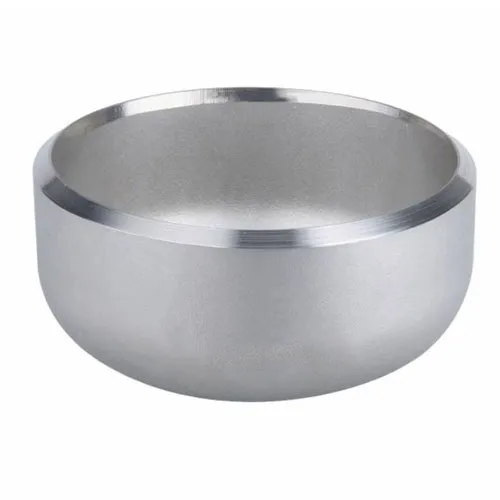-
Cangzhou Yulong Steel Co., Ltd.
-
Phone:
+86 13303177267 -
Email:
admin@ylsteelfittings.com
- English
- Arabic
- Italian
- Spanish
- Portuguese
- German
- kazakh
- Persian
- Greek
- French
- Russian
- Polish
- Thai
- Indonesian
- Vietnamese
- Zulu
- Korean
- Uzbek
- Hindi
- Serbian
- Malay
- Ukrainian
- Gujarati
- Haitian Creole
- hausa
- hawaiian
- Hebrew
- Miao
- Hungarian
- Icelandic
- igbo
- irish
- Japanese
- Javanese
- Kannada
- Khmer
- Rwandese
- Afrikaans
- Albanian
- Amharic
- Armenian
- Azerbaijani
- Basque
- Belarusian
- Bengali
- Bosnian
- Bulgarian
- Catalan
- Cebuano
- China
- China (Taiwan)
- Corsican
- Croatian
- Czech
- Danish
- Esperanto
- Estonian
- Finnish
- Frisian
- Galician
- Georgian
- Kurdish
- Kyrgyz
- Lao
- Latin
- Latvian
- Lithuanian
- Luxembourgish
- Macedonian
- Malgashi
- Malayalam
- Maltese
- Maori
- Marathi
- Mongolian
- Myanmar
- Nepali
- Norwegian
- Norwegian
- Occitan
- Pashto
- Dutch
- Punjabi
- Romanian
- Samoan
- Scottish Gaelic
- Sesotho
- Shona
- Sindhi
- Sinhala
- Slovak
- Slovenian
- Somali
- Sundanese
- Swahili
- Swedish
- Tagalog
- Tajik
- Tamil
- Tatar
- Telugu
- Turkish
- Turkmen
- Urdu
- Uighur
- Welsh
- Bantu
- Yiddish
- Yoruba

Nov . 17, 2024 14:14 Back to list
ansi ff flange
Understanding ANSI FF Flanges A Comprehensive Overview
In the realm of piping systems, flanges play an essential role in the assembly and maintenance of piping networks. Among the various types of flanges, the ANSI (American National Standards Institute) FF (Flat Face) flange is notable for its specific design features and applications. This article will provide a detailed overview of ANSI FF flanges, including their characteristics, benefits, installation practices, and common applications.
What is an ANSI FF Flange?
The ANSI FF flange, as the name suggests, adheres to the standards set by the American National Standards Institute. This type of flange features a flat surface that contacts the mating flange, allowing for a tight seal when properly bolted together. One of the key characteristics of the FF flange is that it does not have a raised face, which distinguishes it from other types of flanges such as the RF (Raised Face) flange. The flat surface ensures compatibility with a variety of sealing methods, making it a versatile choice for many industrial applications.
Key Characteristics
1. Material and Construction ANSI FF flanges can be made from a variety of materials, including carbon steel, stainless steel, and alloy steels. The choice of material typically depends on the operational environment, including temperature, pressure, and the nature of the fluid being transported.
2. Size and Pressure Ratings ANSI FF flanges come in various sizes and pressure ratings. The most common pressure classes include 150, 300, and 600 pounds, which correspond to their maximum pressure capacity. The size ranges from small diameters, suitable for smaller pipes, to larger diameters for heavy-duty applications.
3. Sealing Options The flat face design allows for the use of different sealing options, including gaskets, O-rings, and more. The choice of sealing material is crucial to ensure a leak-proof connection, particularly in high-pressure or corrosive environments.
Advantages of ANSI FF Flanges
- Ease of Installation One of the standout advantages of ANSI FF flanges is their straightforward installation process. The flat surface allows for easy alignment, reducing the risk of misalignment during installation.
ansi ff flange

- Cost-Effectiveness The absence of a raised face typically results in lower manufacturing costs, making ANSI FF flanges a cost-effective option for many industrial applications.
- Versatility ANSI FF flanges can be used in a variety of applications, including water, steam, and even some corrosive fluids when paired with the appropriate sealing materials. This versatility makes them a preferred choice in many industries, including oil and gas, chemical processing, and water treatment.
Best Practices for Installation
To ensure optimal performance and longevity, adhering to best practices during the installation of ANSI FF flanges is crucial
1. Surface Preparation Both flanges should be clean and free from any debris or old gasket material. This helps achieve a tight seal and prevents leaks.
2. Proper Gasket Selection The choice of gasket material should match the operational requirements, including temperature and chemical compatibility. Materials like PTFE, rubber, and graphite are commonly used.
3. Torque Specifications Following specific torque specifications when tightening bolts is critical. Using a torque wrench ensures that the bolts are tightened evenly, preventing warping or uneven pressure distribution.
4. Regular Maintenance Periodic inspections and maintenance of the flange connections help identify any potential leaks or material degradation early, prolonging the life of the piping system.
Conclusion
In summary, ANSI FF flanges offer a reliable and cost-effective solution for connecting piping systems across various industries. Their flat face design not only provides ease of installation but also allows for versatile applications in both low and high-pressure environments. By understanding their characteristics, advantages, and proper installation techniques, engineers and technicians can ensure the integrity of their piping systems and enhance overall operational efficiency. Whether in water treatment plants, chemical processing facilities, or oil and gas operations, ANSI FF flanges are a vital component that contributes to safe and effective fluid transport.
Latest news
-
ANSI 150P SS304 SO FLANGE
NewsFeb.14,2025
-
ASTM A333GR6 STEEL PIPE
NewsJan.20,2025
-
ANSI B16.5 WELDING NECK FLANGE
NewsJan.15,2026
-
ANSI B16.5 SLIP-ON FLANGE
NewsApr.19,2024
-
SABS 1123 FLANGE
NewsJan.15,2025
-
DIN86044 PLATE FLANGE
NewsApr.19,2024
-
DIN2527 BLIND FLANGE
NewsApr.12,2024
-
JIS B2311 Butt-Welding Fittings LR/SR 45°/90° /180°Seamless/Weld
NewsApr.23,2024











